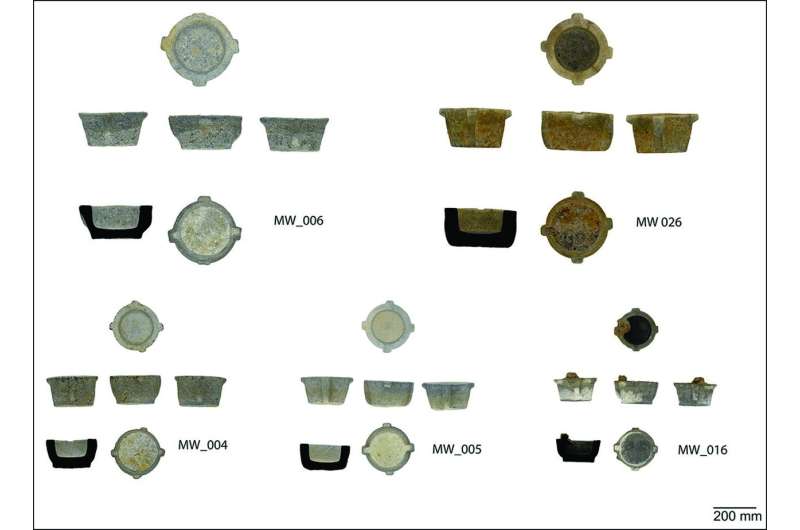This article has been reviewed according to Science X's editorial process and policies. Editors have highlighted the following attributes while ensuring the content's credibility:
fact-checked
peer-reviewed publication
trusted source
proofread
Shipwreck highlights medieval England's lucrative trade in valuable stone

Maritime archaeologists at Bournemouth University have analyzed a 13th-century AD shipwreck found off the coast of Dorset in southern England, illuminating the trade networks that facilitated the construction and decoration of many of England's religious monuments.
The 13th century was a period of relative peace and stability in England, during which many large-scale construction projects, such as Salisbury Cathedral, took place.
Despite this, little is known about the trade networks that facilitated this construction, largely due to the scarce archaeological evidence of cargo shipping.
"Thousands of tons of cargo were shipped daily around the shores and rivers of England during this period," says author of the research, Tom Cousins from Bournemouth University. "Although wrecks and shipping losses were common, very little archaeological evidence of the ships and trade networks survives."
To tackle this, he analyzed one of the only known shipwrecks in English waters from this period, which, despite being discovered in 1982, was only identified as a significant shipwreck in 2019 and designated a historic wreck in 2022. The results are published in the journal Antiquity.
The ship was found to have been transporting Purbeck stone and marble, a type of dark-colored limestone sourced from southern England that can be polished to give a marble effect.

These qualities made it desirable for decorative use in cathedrals. It was also in high demand for the production of high-status objects such as grave slabs and mortars, examples of which were found in the wreck.
This ship was operating during the 'golden age' of Purbeck Marble, with construction projects such as Westminster Abbey ordering entire shiploads of the stone. It is thought that almost every English ecclesiastical building built between 1170 and 1350 incorporated it.
Importantly, the grave slabs found in the wreck had not yet been polished. The ship may have been traveling to a large construction project, or specialist workshops in London where the polishing could take place. This indicates large, multi-stage trading networks existed in England facilitating the distribution of Purbeck stone.
Sourcing, transporting and working this marble would have provided jobs for many people, from its quarrying in Purbeck, Dorset, through its shipping across the continent via rivers and coasts, all the way to its processing and installation in castles, abbeys and churches.
Therefore, this wreck provides a unique opportunity to examine not only the logistics of 13th century shipping, but also the livelihoods of many different people during this relatively poorly-understood period.
"While the loss of the ship would have been devastating at the time, today the Mortar Wreck provides a unique opportunity to investigate a key period in European history," concludes Cousins.
"By studying the remains of the Mortar Wreck, we can learn more about technology and trade in the thirteenth century, as well as the activities of sailors and traders, their lives and environment."
More information: Tom Cousins, The Mortar Wreck: a mid-thirteenth-century ship, wrecked off Studland Bay, Dorset, carrying a cargo of Purbeck stone, Antiquity (2024). DOI: 10.15184/aqy.2024.82
Journal information: Antiquity
Provided by Antiquity



















